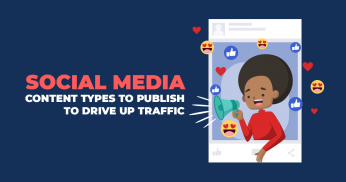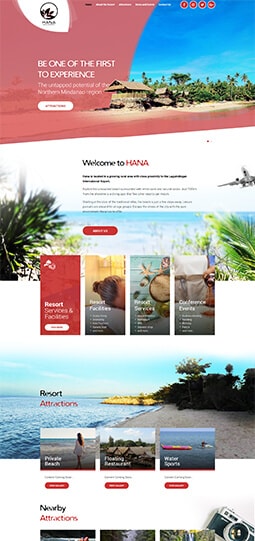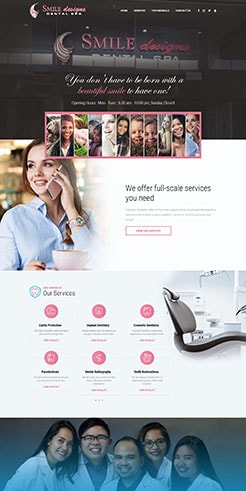
Fixes to Top 5 Website Security Vulnerabilities
Don’t wait for a breach to happen in your network before you take security as a priority. Today, let us discuss 5 of the most common website security vulnerabilities that companies encounter. Learn how they can be fixed and avoided!
Web Security Solutions for Website Security Vulnerabilities
As soon as you have decided to build a website, application, or software, systems security should take an integral chunk of your planning and designing. A great way to deal with website security threats is through effective web security solutions.
Below are 5 of the most common website security vulnerabilities that you may face while running your website. We will also teach you how you can fix or avoid them altogether.
ONE: Broken Access Controls
Users cannot perform actions that you have not included in their intended permissions with the access control policy. If this policy fails, unfavorable instances could occur.
Among these instances include the unauthorized disclosure, modification, and destruction of confidential and personal information. For instance, unauthorized users could perform business functions outside of their limits.
To prevent web security failures such as broken access controls, you should deny all attempts to access except for public resources by default. Additionally, you can apply access control mechanisms once and use them again throughout the website or application.
Then, make sure that your model access controls can enforce record ownership instead of allowing any user to read, create, update, or remove any record. Aside from this, your domain model should enforce unique website or application business limit requirements.
It would be best if you also disabled the webserver directory listing. Then, check if you have not included your file metadata and backup files in your web roots. Finally, when the system records a repeated failure to access, it should alert the admin.
TWO: Cryptographic Failures
So that your website or application complies with data privacy laws and regulations, you should protect data in transit and at rest. These data include personal information, passwords, credit card numbers, health records, business finances, and the like.
Here’s how you can prevent web security failures, such as cryptographic failures:
- First, your website or application should be able to determine which information is sensitive or confidential according to data privacy laws and regulations.
- In addition, don’t keep sensitive data when it is no longer needed—you can discard them, truncate them, or use PCI DSS-compliant tokenization. When data is at rest, make sure to encrypt them. When information is in transit, encrypt them with protocols, including secure parameters, TLS with forward secrecy ciphers, or cipher prioritization by the server.
- You can even enforce encryption through directives such as HTTP Strict Transport Security (HSTS).
THREE: Injection Failures
Your website becomes vulnerable to attacks when data injected by users are not correctly validated or filtered. These injections include SQL, NoSQL, LDAP, OS command, and more.
Injection failures can also happen when “non-parameterized calls without context-aware escaping are used directly in the interpreter.” Finally, attackers can input hostile data within object-relational mapping (ORM) search parameters to collect sensitive records.
To prevent web security failures such as injection failures, you should perform source code reviews to determine if your website is vulnerable to injections. Additionally, you should perform automated testing of your URL, parameters, headers, cookies, SOAP, JSON, and XML data inputs.
Aside from this, you can implement SAST, DAST, and IAST website security testing tools into your CI/CD pipeline. Through this, you can determine injection flaws before you publish your site.
In addition, you can use a safe API to have a parameterized interface, migrate to ORMs, or avoid using the interpreter. The use of whitelist server-side input validation can also help prevent injection failures.
FOUR: Insecure Design
When we say insecure design, it refers to a wide array of website security vulnerabilities caused by missing or ineffective control designs. But then, even if your website or application is not vulnerable and has a secure design, it can still have implementation defects that could result in vulnerabilities, which attackers can exploit.
As such, your design needs to have sufficient security controls to ensure proper defenses against any attack. Thus, you must determine the level of security design required by your website or application before developing it.
Here’s how you can prevent web security failures, such as having an insecure design for your website or application.
- First, you must create and use a secure development lifecycle with the help of web security plans or solutions. These professionals can help in evaluating and designing controls regarding your website’s security and privacy.
- Second, it would help if you used a library of secure design patterns or components.
- In addition, it would help to use threat modeling for access control, critical authentication, key flows, and business logic.
- Additionally, implement plausibility checks in every tier of your website or application, from the frontend to the backend.
- Lastly, you can limit resource consumption according to user or service.
FIVE: Security Misconfiguration
Your website becomes vulnerable if you have not properly configured permissions on cloud services. Security misconfiguration also happens when there is missing appropriate security hardening across your application stack. In addition, it can occur when you enable or install unnecessary features, including ports, pages, services, privileges, or accounts.
Aside from that, your website can become vulnerable if you have still enabled default accounts, including their passwords. Finally, it can happen if the website or application is not up to date. Fortunately, you can prevent web security failures such as system misconfigurations by implementing cutting-edge cybersecurity measures.
For instance, you can implement a repeatable hardening process to deploy another appropriately locked-down environment conveniently. You can do this by keeping a minimal website by uninstalling unused features and frameworks.
Lastly, it is integral to review your security notes, updates, patches, and cloud storage permissions.
BONUS: Other Must-Know Website Security Vulnerabilities
Here are some other common website security vulnerabilities that you should know about:
- Vulnerable and Outdated Components
- Identification and Authentication Failures
- Software and Data Integrity Failures
- Security Logging and Monitoring Failures
- Server-Side Request Forgery (SSRF)
Implement Web Security Solutions for Secure Websites Now!
You can avoid these website security vulnerabilities through web security solutions. So, let us know how we can help by sending us a message or letting us know in the comments section below. We’ll be waiting for you!




















Comment 0